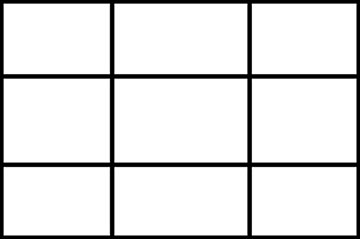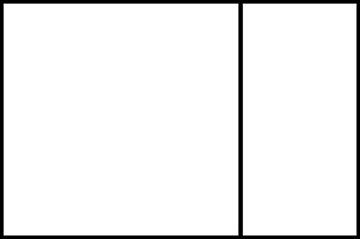The rule of thirds is a rule of thumb in visual arts that says an image should be divided into 9 equal parts with two equally spaced horizontal lines and two equally spaced vertical lines. Imagining the setup, you should see 9 squares or rectangles in a grid on the image. The intersection of the lines are the points where you should place your aspects of interest. Let’s say for example that you are taking a photo of a full body cosplayer shot. You would position the center of their face at one of those line intersections, say the top-right intersection. This would mean their body, if standing straight, would take up the right side of the image, leaving the left side of the image available for background. While I’m just skimming the surface of this rule, comparing an image where the subject is off center to provide depth and scale would generally be more appealing than just putting the subject in the center of the frame without much else.

The golden ratio is another rule of thumb in visual arts, but is a lot more detailed in how it is calculated. I’ll skip the mathematical equations and just say that the ratio is often simplified into a frame that splits up into two horizontal sections, where the ratio is 1:1.618. Drawing an imaginary vertical line between the two sections would be the general area where you want to place your subject of interest. This can be flipped so that the larger section is on the opposite side of the frame.

- Overview
- Who is this for?
- What is convention photography?
- My experience and experiences
- Why be a part of this?
- Practice, practice, practice!
- Networking
- Fun
- Photography terms primer.
- Equipment
- It is important or not depending on your ideals
- A basic setup.
- Decide how you want to make it work.
- Framing and composition
- Full body shots.
- Portrait style.
- Skewed angles.
- Face in detail.
- Plane of focus.
- Rule of thirds and golden ratio
- Available light photography.
- Strobe photography.
- Removing harsh light.
- Flash brackets.
- Bokeh and blur maximization.
- Histogram reading and image review.
- Post processing.
- Various schools of thought.
- Available software on your OS of choice.
- Ideas on how to improve your processing.
- Business cards.
- Social networking.
- Website
- The process from start to finish.
- My equipment.
- Ask the person first.
- Interrupting people.
- Constrained areas.
- Physical activity.
- Summary
